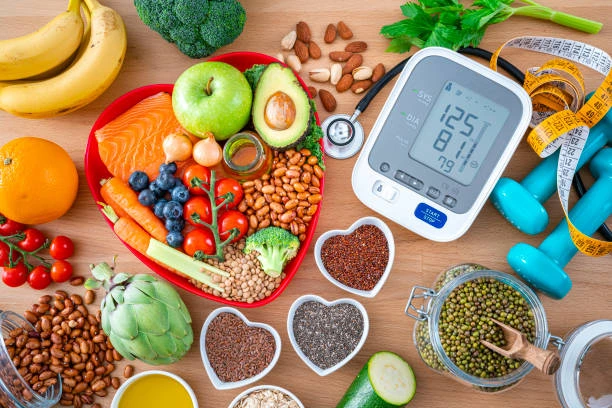Author's details
- Dr. Khashau Eleburuike
- MBBS (Ilorin) MSc. Global Health Karolinska Institute.
- Resident doctor in family medicine in Northern Sweden.
Reviewer's details
- Dr Abdulgafar Lekan Olawumi
- MBBS, MHE, MPH, FWACP, FMCFM

Best Diet for Hypertensive Patients in Sub-Saharan African Settings
Introduction
For hypertensive patients in sub-Saharan Africa, a heart-healthy diet is crucial in managing blood pressure and reducing the risk of complications.
Discussion
Below are key dietary recommendations, tailored to local food availability and cultural practices:
- Limit Salt Intake:
- Why? Excess salt can increase blood pressure.
- How? Use less salt in cooking and avoid adding table salt. Substitute with herbs and spices like garlic, ginger, coriander, thyme or cumin to enhance flavor. While using herbs be aware of that they could interact with your medications. Avoid processed foods, such as canned fish and salted meats like "bushmeat" or dried fish, which are often high in sodium. The total amount of salt should not exceed 1.5g per day
- Increase Fruit and Vegetables:
- Why? Fruits and vegetables are rich in potassium, which helps regulate blood pressure.
- How? Incorporate local produce such as bananas, oranges, spinach, moringa leaves, cassava leaves, pumpkin leaves, and okra. Aim for a variety of colors and types for the best nutritional benefit.
- Choose Whole Grains Over Refined Carbohydrates:
- Why? Whole grains are unprocessed or unrefined carbohydrates that help in maintaining steady blood pressure and reducing cholesterol levels.
- How? opt for traditional staples like millet, sorghum, brown rice, and whole maize (corn) flour rather than white rice, white bread, or refined maize meal.
- Limit Red Meat and Processed Foods:
- Why? Red meat and processed foods contain saturated fats which raise cholesterol and blood pressure.
- How? Reduce consumption of fatty meats such as goat, beef, and lamb. Instead, choose lean sources of protein like fish (especially oily fish like tilapia), chicken, beans, lentils, and peas.
- Use Healthy Fats:
- Why? Healthy fats can improve heart health and manage blood pressure.
- How? Replace palm oil and animal fats with healthier options like avocado, olive oil, or vegetable oils. Incorporate groundnuts (peanuts) and seeds, but in moderation.
- Stay Hydrated and Limit Alcohol:
- Why? Dehydration can worsen hypertension, while alcohol can increase blood pressure.
- How? Drink plenty of water throughout the day and avoid alcohol consumption because even the least quantity of alcohol damages the heart.
Conclusion
By making these dietary adjustments, patients can better manage hypertension and improve overall heart health. Regular checkups with healthcare providers are essential for personalized care.
References
- Reddy KS, Katan MB. Diet, nutrition and the prevention of hypertension and cardiovascular diseases. Public health nutrition. 2004 Feb;7(1a):167-86.
- Schwingshackl L, Chaimani A, Schwedhelm C, Toledo E, Pünsch M, Hoffmann G, Boeing H. Comparative effects of different dietary approaches on blood pressure in hypertensive and pre-hypertensive patients: a systematic review and network meta-analysis. Critical reviews in food science and nutrition. 2019 Sep 8;59(16):2674-87.
- Sacks FM, Moore TJ, Appel LJ, Obarzanek E, Cutler JA, Vollmer WM, Vogt TM, Karanja N, Svetkey LP, Lin PH, Bray GA. A dietary approach to prevent hypertension: a review of the Dietary Approaches to Stop Hypertension (DASH) Study. Clinical cardiology. 1999 Jul;22(S3):6-10.
- Suter PM, Sierro C, Vetter W. Nutritional factors in the control of blood pressure and hypertension. Nutrition in Clinical Care. 2002 Jan;5(1):9-19.
- Reddy KS, Katan MB. Diet, nutrition and the prevention of hypertension and cardiovascular diseases. Public health nutrition. 2004 Feb;7(1a):167-86.r
- World Health Organization. Sodium reduction. July 14 2023. Available at: https://www.who.int/news-room/fact-sheets/detail/salt-reduction. Accessed January 2 2025.
World Health Organization. Trans fat. January 24 2024. Available at: https://www.who.int/news-room/fact-sheets/detail/trans-fat Accessed January 2 2025.
